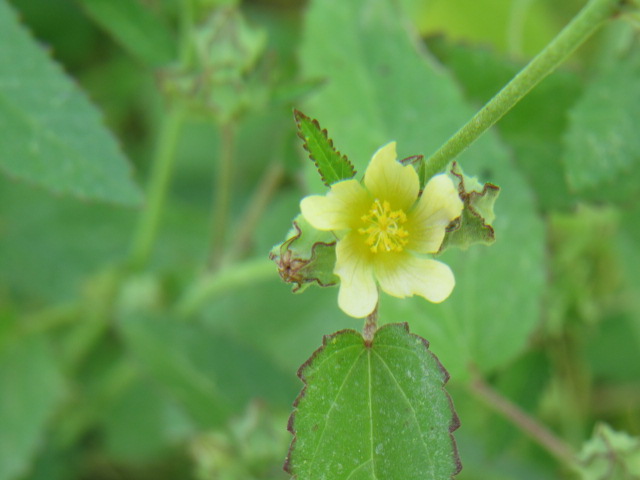
Malva sylvestris (Common Mallow) on 6-5-19, #583-23.
Malvaceae Juss.
mal-VAY-see-ee
OR
mal-VAY-see-eye
The plant family Malvaceae was named and described by Antoine Laurent de Jussieu in Genera Plantarum in 1789.
As of 12-21-23 when this page was last updated, Plants of the World Online lists 246 accepted genera in this family commonly known as the mallow family.
I only have experience with a few members of this family. You can click on the names under the photos to take you to their own pages.
For more information about this family of plants, please click on the links below. The links take you directly to the information about the family.
PLANTS OF THE WORLD ONLINE
FLORA OF NORTH AMERICA
FLORA OF MISSOURI
WIKIPEDIA
BRITANNICA

Callirhoe involucrata (Winecup Mallow, Etc.) on 7-22-21, #817-10.
I found a good-sized colony of Callirhoe involucrata (Winecup Mallow, Etc.) along the road next to the park in July 2021. Common names include Winecup Mallow, Finger Poppy, Poppy Mallow, Purple Poppymallow, Purple Poppy Mallow Buffalo Rose, and possibly others.
<<<<+>>>>

Hibiscus trionum (Flower Of An Hour) on 8-5-20, #739-1.
I found a few of these Hibiscus trionum (Flower Of An Hour) growing in the garden in 2020 but its flowers were usually always closed by the time I went to work in the garden. The species gets its common name, Flower of An Hour, due to the flowers being only open for a short period of time during the day. Common names include Common Mallow, Common Dwarf Mallow, Round-Leaved Mallow, Running Mallow, Round Dock, Umbrella Mallow, Buttonweed, Cheeseplant, Wheel of Cheese, and maybe others.
The Hibiscus trionum is an easily recognized wildflower that grows in a variety of habitats in fields, gardens, pastures, especially where the ground has been tilled. The species is not native to the United States and was originally brought here as an ornamental. They can become a problem in fields and gardens…
<<<<+>>>>

Malva neglecta (Common Dwarf Mallow) on 6-16-19, #591-34.
I have quite a colony of Malva neglecta (Common Dwarf Mallow) that always grows along the northeast side of the house. Here they are annual or perennial wildflower that may come up from the roots but for sure they reseed. Plants branch out at the base and sprawl out along the ground (procumbent to ascending) and the stems have short, fine hairs (pubescent, stellate pubescent). Supposedly they do not root at their leaf nodes.
<<<<+>>>>

Malva sylvestris (‘Zebrina’ ?) (Common Mallow) on 6-15-19, #590-13.
I brought this Malva sylvestris (‘Zebrina’ ?) (Common Mallow) home from Wagler’s Greenhouse in 2019. There was no label on the pot but it did remind me of Hollyhocks. I asked Mrs. Wagler what it was and she said it was a Miniature Hollyhock. Once she described its flowers, I knew it was the same as the plants that had been growing at the church I attend. I identified them as Malva sylvestris and the flowers looked like the cultivar ‘Zebrina’. I am not certain that is the cultivar name, but it is likely. The plants have been growing in the bed at church for many years and who knows who planted them or how long ago. Malva sylvestris has many common names including Common Mallow, High Mallow, Mallow, Tall Mallow, Cheeses, French Hollyhock, Miniature Hollyhock, Striped Mallow and probably many more…
<<<<+>>>>

Sida spinosa (Prickly Fanpetals) on 9-14-22, #911-3.
I found quite a good-sized colony of this species known as Sida spinosa (Prickly Fanpetals) in an area south of the barn on September 1 in 2022. When I first found them I thought they were just in a small area. After going back several times to try to get photos of open flowers, I realized the colony was much larger. To get flowers, I had to go out normally than I usually do. It was worth the extra time because the flowers are really neat. Besides Prickly Fanpetals, other common names include Prickly-Mallow, Prickly Sida, White Broomweed, and possibly others. There are many great websites with information about the species. You can click on the plant’s name to go to its page and there are links at the bottom.
That’s all I have experience with in the plant family Malvaceae for now.